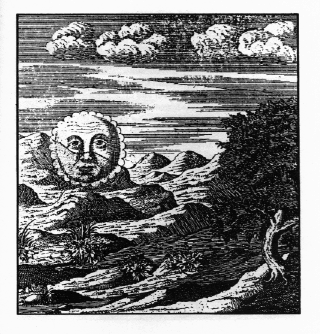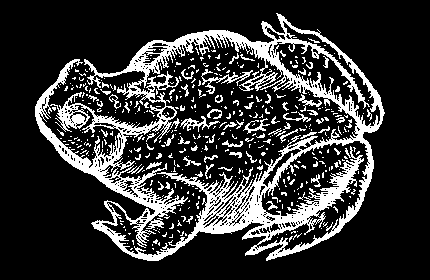Last
Cheater's
Waltz
Beauty and Violence in
The Desert Southwest
Ellen Meloy
(Arizona)
 I don't know. Maybe desert living does something funny to the head. Everyone I've known who lived far off in those parched lands was a bit strange. Like the old bastard that lived behind us in a trailer in the place they called No Mirage.
I don't know. Maybe desert living does something funny to the head. Everyone I've known who lived far off in those parched lands was a bit strange. Like the old bastard that lived behind us in a trailer in the place they called No Mirage.He had a collection of ugly mastiffs that would go on and on, keeping us and our one or two neighbors awake most of the night. He was quite surly about it. When we went to complain about the noise, he met us near the accordion- A couple of winters ago, he had a heart- So we figure that this woman Meloy who wrote The Last Cheater's Waltz has been fried with this self-same non-stop overdose of sunshine and wind, something to make her such a wonder with words. Either that, or the strontium-90 in her milk. These are what she has to say about the locale of Trinity, that government operation that brought the world the first atomic bomb almost sixty years ago: This haunted real estate is neither beautiful nor terrifying. It is beautifully terrible. It conflates the ultimate with the intimate, poises a strange equanimity between near pristine lands and proving grounds for the extermination of life --- a self-canceling proposition. It evokes a conflict of the psyche, a collision of dispassion and vulnerability, that may bear more veracity about our century's troublesome relationship to the western deserts than the most sublime nature photograph. Monuments and artifacts carry the news of history in a kind of code of remembrance. Here at Trinity the land itself is the carrier --- austere, at times bleak, a space so vast it absorbs all silences but its own. If no one tells you what happened here, nothing in the desert itself would give it away. The land appears to have no meaning that which I bring to it with my own knowledge. Yet if who I am is geography as well as blood, if living were I do matters, then this place, too, is blood and bone. She takes a naturalist's world view, mixes it with geology, history, psychology, humanity, and blends into a lyric whole that is sweet, sharp, and sometimes very poignant. The desert is where she lives --- in Utah, near Four corners --- but it is also where she travels and thinks and wonders about, for example, the United States creating and testing and developing the most secret awful weapons, and doing it in her homeland. For example, she tells us about Los Alamos: besides being the locale for the brains behind the bomb, it was a place that had, churches, schools, a theater, a symphony orchestra, teas, cocktail parties, alcoholics, and a mystique --- in the words of Freeman Dyson, "a brilliant group of city slickers suddenly dumped into the remotest corner of the Wild West and having the time of their lives building bombs." Los Alamos had punch served in chemical reagent jars and seven thousand fire extinguishers. It had no unemployment, no jail, no parking, and no in-laws. Those of us who grew up with the bomb at first thought nothing strange of cooking up several hundred thousand Japanese in order to end a war, but then, with onset of sword- be In her writing, Meloy recreates those years, the funny words that became part of our vocabulary: Manhattan Project and heavy water and mushroom cloud and Trinity and Fat Boy and H-Bomb and Bikini and radiation sickness and strontium-90: In the midfifties strontium-90 from nuclear fallout began to show up in wheat, soil, and cow's milk...Scientists referred to measures of strontium-90 euphemistically as "sunshine units." The breasts of nursing mothers, too, carried sunshine units. Bonded to milk, the most primary of life-giving substances, this formerly obscure radioactive isotope entered the household lexicon (every fifties kid could pronounce strontium-90), the public consciousness (protests against the health hazards of global fallout gathered momentum), and the pop culture (out of the petri dish of nuclear contaminants rose unhappy reptilian and insectiod mutations.)
Meloy is a desert person, and while Trinity and Los Alamos and our militarism turn up in almost every chapter like a bad dream (Americans have devoted more acreage of public domain to military reserves than to all national parks combined she tells us), she is also alive to the life and the wonder and the beauty and the sexiness of the desert. "When the rains do come, nearly everything in the desert around you is probably having sex," she tells us: If you are a toad in the Chihuahuan Desert, nature has designed a simple strategy for reproducing yourself. It rains. You sing. You copulate. Very quickly. Water, the desert's most limited and unpredictable element, cues amphibian lust, and when it does, the toads must emerge from their burrows and find the precise location of potential mates normally scattered across the land like long-lost golf-balls. For this they need robust voices. Indeed, when you reduce these squat creatures to quintessential toadness, you find vocal cords and skin. Ms. Meloy has written a profound and sad and wondering and sometimes very funny account of one person in her element, which is the Southwest Desert, not only the hiding place for the sins of America's warlike character, but, too, those who have died or gone mad somewhere in its depths, dying for lack of the most basic stuffs of life --- food, shelter, water. And when she and her husband hire in a team to drill for water on their eight-acre plot in Utah, it comes out red: I stared grimly at the world's most expensive subterranean vegetable drink...I did not sleep well. Several times I left out bed and visited the wellhead, tempted to shut off the valve. Never did my desert bones allow me to take water for granted. Running it this way seemed profligate and insane. I sat under the Milky Way's broken necklace and watched the pipe spew artesian ketchup. I pictured Mark and me forever dressed in a sad, tomato-colored wardrobe, our clothes laundered in red water.
us.
